
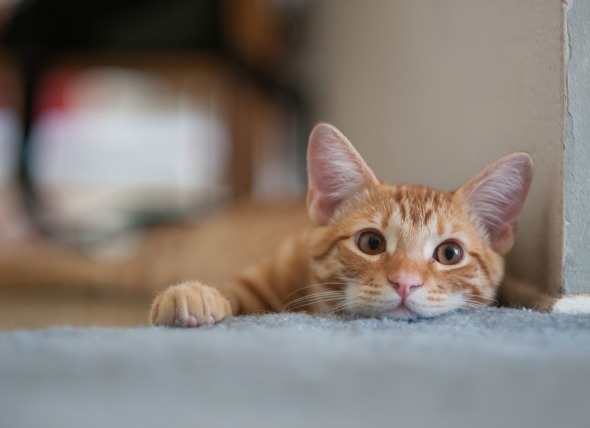
The feline immunodeficiency virus (FIV) infection is a complex retrovirus that causes immunodeficiency disease in domestic cats.
Immunodeficiency is the medical term used to describe the body’s inability to develop a normal immune response. As a result of immunodeficiency, most infected cats do not show symptoms and have normal life expectancy, however they are prone to developing other infections and certain types of cancer.
A retrovirus, such as FIV, inserts a copy of its genetic material into the DNA of a host cell, where it can replicate. FIV is a lentivirus. a specific type of retrovirus that can take months, or even years to incubate, so the virus is slow moving, capable of lying dormant in the body before causing symptoms. “It is in the same class of viruses as the human immunodeficiency virus (HIV), the causative agent of acquired immunodeficiency syndrome (AIDS) in people.” (1)
There is no genetic susceptibility for infection, although genetics may play a role in the progression and severity of the disease. The average age is five years at the time of diagnosis, and the likelihood of infection increases with age. “FIV is a transmissible disease that occurs more often in males because of their tendency to be more aggressive, and because they are more likely to roam, thereby increasing their exposure to the virus.” (2)
Your veterinarian will perform a thorough physical exam on your cat, taking into account the background history of symptoms and possible incidents that might have precipitated this condition. A complete blood profile will be conducted, including a chemical blood profile, a complete blood count, and a urinalysis. Your doctor will need to rule out bacterial, viral, or fungal infections, and will also test for parasites and tumors before settling on a final diagnosis.
A complete blood profile will be conducted, including:
Your doctor will need to rule out bacterial, viral, or fungal infections, and will also test for parasites and tumors before settling on a final diagnosis.
Unless your cat is severely dehydrated, he or she will be treated on an outpatient basis.
Your veterinarian will first work to manage any secondary infections. While this concurrent infection will not usually cause disease, your cat’s weakened immune system will give it entrée and they will cause further complications in your cat’s overall health.
Surgery may be necessary for dealing with infected teeth and for the removal of tumors. A special diet plan may also need to be put into place.
How much monitoring your cat will need from you depends on secondary infections and other manifestations of the disease.
You will need to watch for the occurrence of infections in your sick cat, and be aware that wasting, or severe weight loss may occur, and that your pet may eventually die of this disease. But, in general, the earlier FIV is detected, the better your cat’s chances are for living a long and relatively healthy life.
“Within 4.5 to 6 years after the time of infections, about 20 percent of cats die; however, over 50 percent will remain without clinical signs of the disease.” (4) In the late stages of the disease, when wasting and frequent infections are most likely to occur, life expectancy is less than a year. Specifically, inflammation of the gums and mouth may not respond to treatment or may be difficult to treat.
In order to prevent this disease from occurring in the first place, you should vaccinate your cat against the virus, and protect your cat from coming into contact with cats that are FIV positive. You will also want to quarantine and test new cats that are coming into your household until you are sure that they are free of the virus. “It is important to note that some cats will test positive for FIV if they are carriers, although they may never have symptoms of the virus, and that cats that have been vaccinated against the virus will test positive for it even though they do not carry it.” (5)
“Euthanasia is not normally called for when a cat has tested positive in part because of these reasons.” (6) If your cat has tested positive you will need to talk to your veterinarian about what to do to prevent possible transmission to other cats, and what symptoms to be watchful for, should they occur.
To answer some of the most frequently asked questions about FIV, we consulted with Dr. Niels Pedersen of UC Davis School of Veterinary Medicine; Virginia Corrigan, DVM of the Virginia-Maryland College of Veterinary Medicine; and Richard Meadows, DVM, DABVP of the University of Missouri, College of Veterinary Medicine.
1. Is there a vaccine for FIV?
"There is a vaccine for FIV, but it is considered a non-core vaccine for cats. It may provide some protection against FIV for cats at high risk of exposure, however its use is controversial and it is generally not recommended," explains Virginia Corrigan, DVM. "Another issue with vaccination is that a vaccinated cat will test positive for FIV, and the antibodies produced from the vaccine cannot be distinguished from natural infection. Therefore, if the veterinarian or owner is not aware that the cat has been vaccinated in the past, an incorrect diagnosis of FIV infection may be made."
Dr. Pendersen adds, "Even if we assume that it is effective, there is really not much of a reason to use it on pet cats. The infection is transmitted between males mainly by territorial aggression, and for that reason the highest risk cats are intact males living in more dense outdoor environments where there is a lot of competition for food and females."
2. What’s the best way to prevent a cat from getting FIV?
"The virus is present in the saliva of infected cats, so FIV is usually transmitted between cats through bite wounds. It can also be transmitted via sustained contact with an infected cat or from an infected mother cat to her kitten. All cats should be tested for FIV when they are kittens and after any exposure to a potentially infected cat, particularly if there was a bite wound. Cats that are FIV-positive should be kept inside and separate from non-positive cats. Cats that go outdoors and come in contact with other cats outside are at the highest risk," Corrigan says.
One of the best routes for prevention, Richard Meadows, DVM, suggests, "Spaying and neutering cats decreases fighting behavior and preventing access to FIV positive cats."
3. What are the physical and emotional changes that happen to a cat that has FIV?
Put simply, by Corrigan, "Most infected cats are asymptomatic and feel well. They can live a normal life and have a normal life expectancy. However, they are more prone to developing secondary infections and certain types of cancer." Meadows adds, “FIV should not be looked at as a death sentence since many cats with FIV can live apparently healthy and happy lives for years. Over time the FIV infection does progressively suppress the immune system and this will result in physical decline (weight loss, secondary infections, neurological problems, etc)."
"Cats are rarely seen in the acute stage of the disease, where you might observe fever, enlarged lymph nodes, vasculitis, and white blood cell changes,” Pendersen explains, “More often the acute stage of infection goes unnoticed and it is many months or years later that the more common signs of the chronic infection occur. Signs of immunodeficiency often include chronic oral and nasal infections, skin infections, and intestinal infections. Some FIV infected cats develop chronic neurologic disease, often manifested by vague changes in behavior."
4. What are the stages of FIV?
"There are basically three stages. The primary stage lasts for 2-4 weeks or so and usually resolves spontaneously, but can sometimes be very severe and lead to death. This is followed by a variable, but often very long latent stage where the cats remain outwardly healthy. The terminal stage occurs as long as 7-10 years later, but sometimes sooner, and is manifested by diseases associated with immunodeficiency or cancer," Dr. Pendersen says.
5. How is FIV like HIV?
Dr. Pendersen further explains, "FIV tends to be a milder disease and terminal disease often occurs later in life, if at all. HIV is a much more serious disease with higher mortality if untreated with antiviral drugs."
6. Are certain breeds more susceptible to getting FIV?
"No, any breed of cat can get FIV,” Corrigan says.
7. Can FIV be passed from mother cat to kitten?
"Experimentally, using high levels of exposure, the mothers can transmit FIV to the kittens. It is controversial whether or not this occurs in nature. However, kittens born to FIV positive mothers in the clinically asymptomatic stage may test positive for FIV for the first four to even six months of life without becoming positive for FIV after that time. This likely reflects antibodies from the mother circulating in the kitten’s blood stream early in life," Meadows says.
8. What are the best treatment options for cats with FIV?
Simply put, there is no specific treatments. "There are no safe and effective anti-viral drugs for FIV so this is not an option," Pendersen explains,” Fortunately, it is usually not necessary to treat them as long as they are healthy. When they do become ill, we try to diagnose whatever complication that occurs and treat it if possible. This can prolong life for a long time in many FIV infected cats in the terminal stages of the disease. There are several biologics that are being touted on the web as having immunostimulatory properties and to be effective in prolonging the lives of FIV infected cats. We believe these to be expensive and ineffective. Interestingly, a recent study demonstrated that FIV infected cats forced to live in crowded and unsanitary multi-cat environments had a much higher mortality and died earlier than FIV infected cats that lived as normal household pets. This suggests that the stresses of such environments had a negative effect on FIV infection. We are also often surprised how well some FIV infected feral toms, showing definite signs of FIV disease, respond to proper care and diet. We believe that many FIV infected toms become too ill too effectively hunt for themselves in nature and actually attach themselves to homes where people will provide them food and shelter. Many of these cats eventually return to normal health with proper diet and go on to be castrated and become regular pets, living normally for many more years."
Corrigan suggests that, "Raw meat and dairy products should be avoided. Regular dental care is also very important, as they are prone to developing inflammation and infection of the teeth and gums. There are some medications that may help stimulate the cat’s normal immune response. FIV positive cats should be kept indoors and separate from FIV-negative cats in order to avoid spreading the virus."
9. Does FIV affect male or female cats more often?
According to Meadows, male cats are affected by FIV more often. "This is primarily associated with the roaming behavior (searching for breeding partners) and defense of territories both of which are more intense in intact male cats than in other cats,” he says.
1. Bendinelli, Mauro, et al. "Feline immunodeficiency virus: an interesting model for AIDS studies and an important cat pathogen." Clinical Microbiology Reviews8.1 (1995): 87-112.
2. Yamamoto, J. K., et al. "Epidemiologic and clinical aspects of feline immunodeficiency virus infection in cats from the continental United States and Canada and possible mode of transmission." Journal of the American Veterinary Medical Association 194.2 (1989): 213-220.
3. Pedersen, N. C., et al. "Feline immunodeficiency virus infection." Veterinary immunology and immunopathology 21.1 (1989): 111-129
4. Ravi, Madhu, et al. "Naturally acquired feline immunodeficiency virus (FIV) infection in cats from western Canada: Prevalence, disease associations, and survival analysis." The Canadian Veterinary Journal 51.3 (2010): 271.
5. American Association of Feline Practitioners (2002), "Feline Immunodeficiency Virus", Cornell Feline Health Center (Cornell University, College of Veterinary Medicine), retrieved 2008-11-12
6. Hosie, MJ et al. (2009), "Feline immunodeficiency. ABCD guidelines on prevention and management", Journal of Feline Medicine & Surgery 11 (7): 575–84, doi:10.1016/j.jfms.2009.05.006, PMID 19481037.
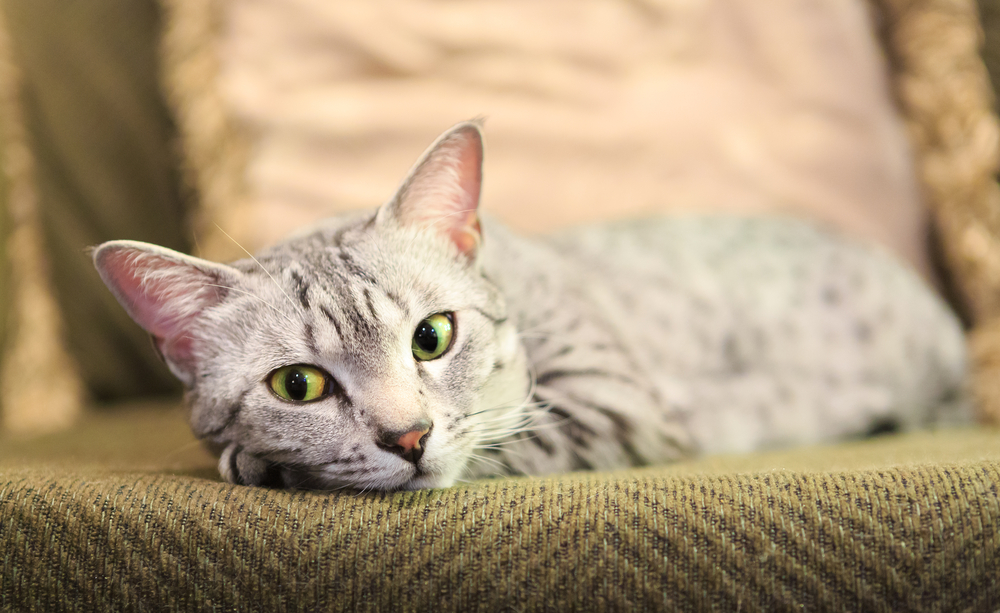 E. Coli Infection in Cats
Colibacillosis in Cats
Escherichia coli, commonly
E. Coli Infection in Cats
Colibacillosis in Cats
Escherichia coli, commonly
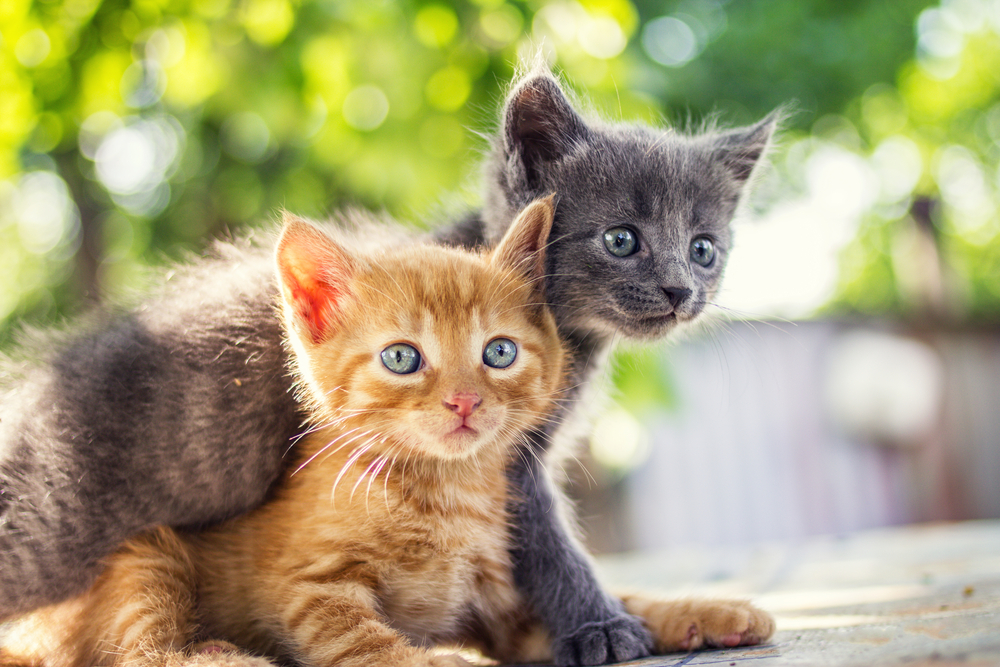 Coronavirus in Cats
Feline Infectious Peritonitis (FIP) in Cats
Felin
Coronavirus in Cats
Feline Infectious Peritonitis (FIP) in Cats
Felin
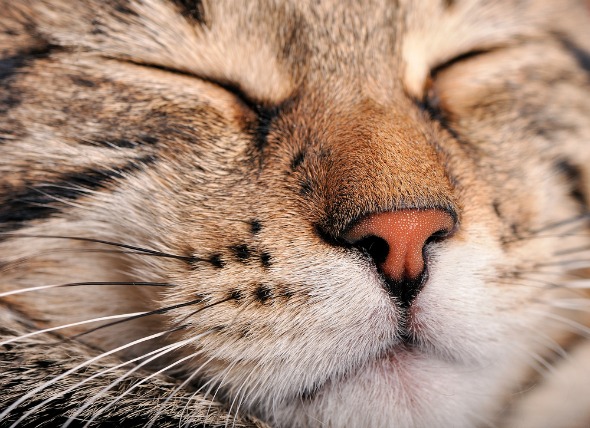 Nose Bleed in Cats
Epistaxis in Cats
A bleeding nose can be the resu
Nose Bleed in Cats
Epistaxis in Cats
A bleeding nose can be the resu
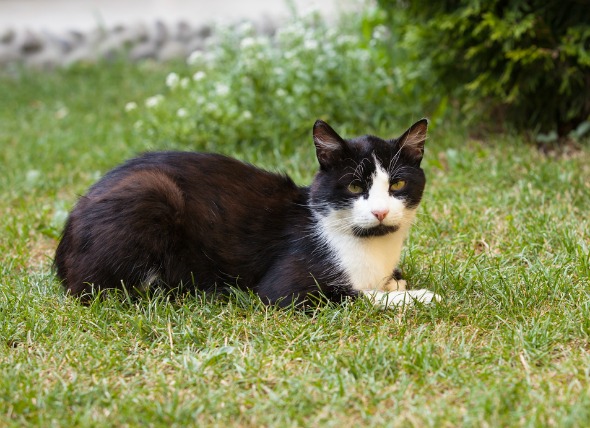 Stomach Worm Infection (Physalopterosis) in Cats
Physalopterosis in Cats
Physalopterosis is caused
Stomach Worm Infection (Physalopterosis) in Cats
Physalopterosis in Cats
Physalopterosis is caused
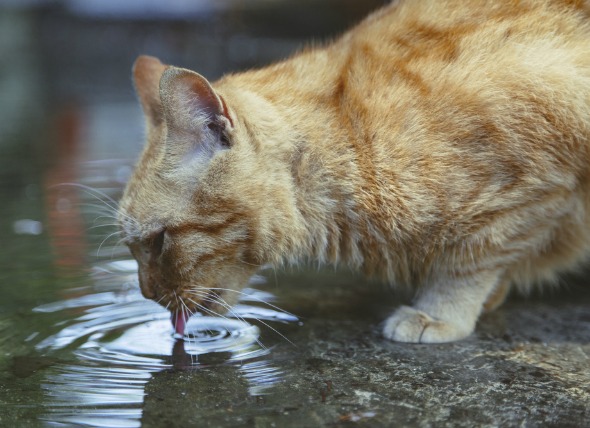 Intestinal Parasite (Cryptosporidia) in Cats
Cryptosporidiosis in Cats
Cryptosporidium is an i
Intestinal Parasite (Cryptosporidia) in Cats
Cryptosporidiosis in Cats
Cryptosporidium is an i
Copyright © 2005-2016 Pet Information All Rights Reserved
Contact us: www162date@outlook.com